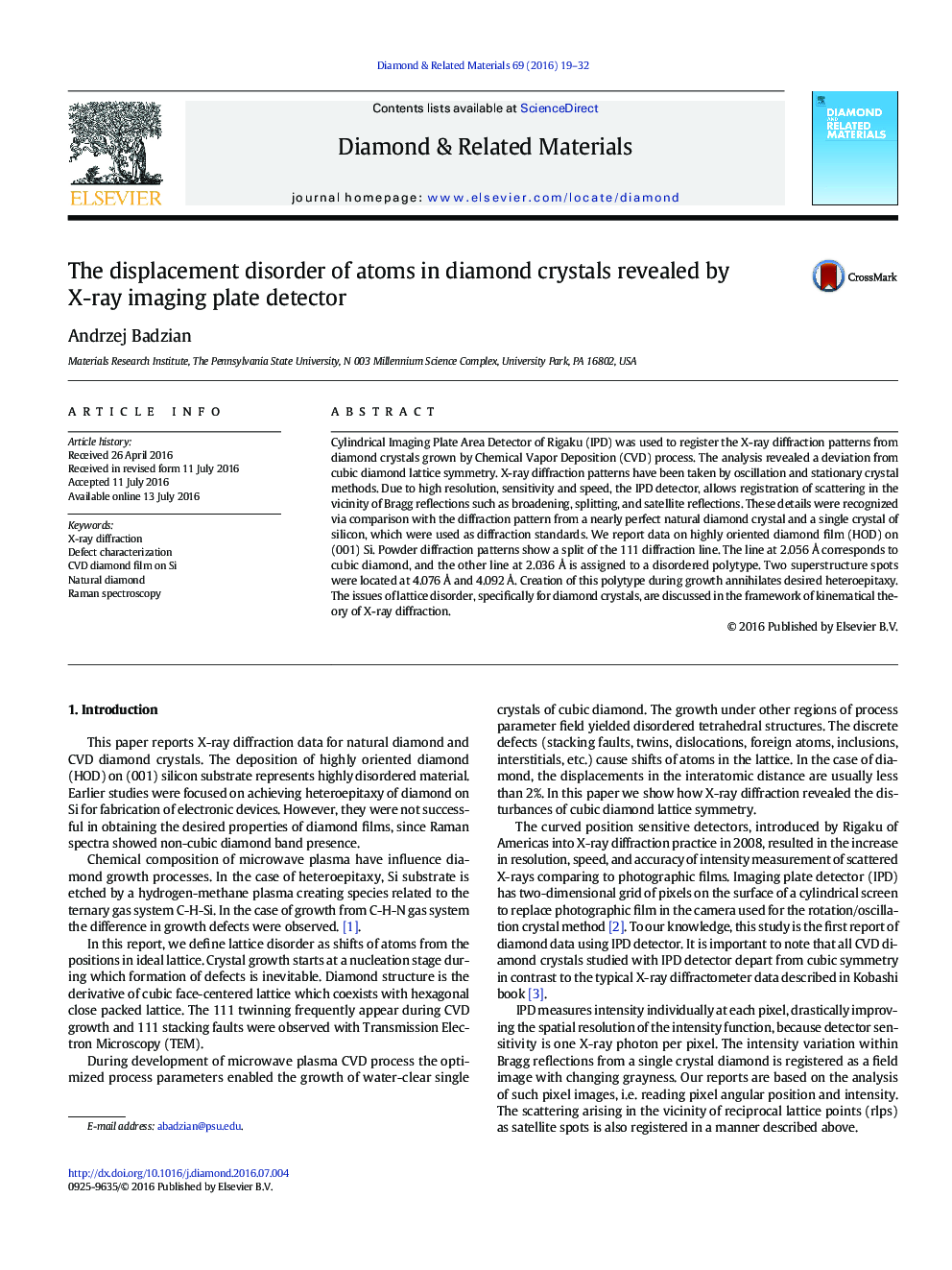| Article ID | Journal | Published Year | Pages | File Type |
|---|---|---|---|---|
| 701426 | Diamond and Related Materials | 2016 | 14 Pages |
•X-ray diffraction from Si and natural diamond was used for comparison with CVD crystals.•Imaging plate detector revealed splitting 111 line from oriented diamond film on Si.•CVD diamond film on (001) constitutes 2 phase material: cubic phase and a polytype.•Band at 1500 cm− 1 in Raman spectra is not related to sp2 chemical bonding.•X-ray diffuse scattering theory is described as a novel method to study lattice distortion in diamond.
Cylindrical Imaging Plate Area Detector of Rigaku (IPD) was used to register the X-ray diffraction patterns from diamond crystals grown by Chemical Vapor Deposition (CVD) process. The analysis revealed a deviation from cubic diamond lattice symmetry. X-ray diffraction patterns have been taken by oscillation and stationary crystal methods. Due to high resolution, sensitivity and speed, the IPD detector, allows registration of scattering in the vicinity of Bragg reflections such as broadening, splitting, and satellite reflections. These details were recognized via comparison with the diffraction pattern from a nearly perfect natural diamond crystal and a single crystal of silicon, which were used as diffraction standards. We report data on highly oriented diamond film (HOD) on (001) Si. Powder diffraction patterns show a split of the 111 diffraction line. The line at 2.056 Å corresponds to cubic diamond, and the other line at 2.036 Å is assigned to a disordered polytype. Two superstructure spots were located at 4.076 Å and 4.092 Å. Creation of this polytype during growth annihilates desired heteroepitaxy. The issues of lattice disorder, specifically for diamond crystals, are discussed in the framework of kinematical theory of X-ray diffraction.
Graphical abstractFigure optionsDownload full-size imageDownload as PowerPoint slide
